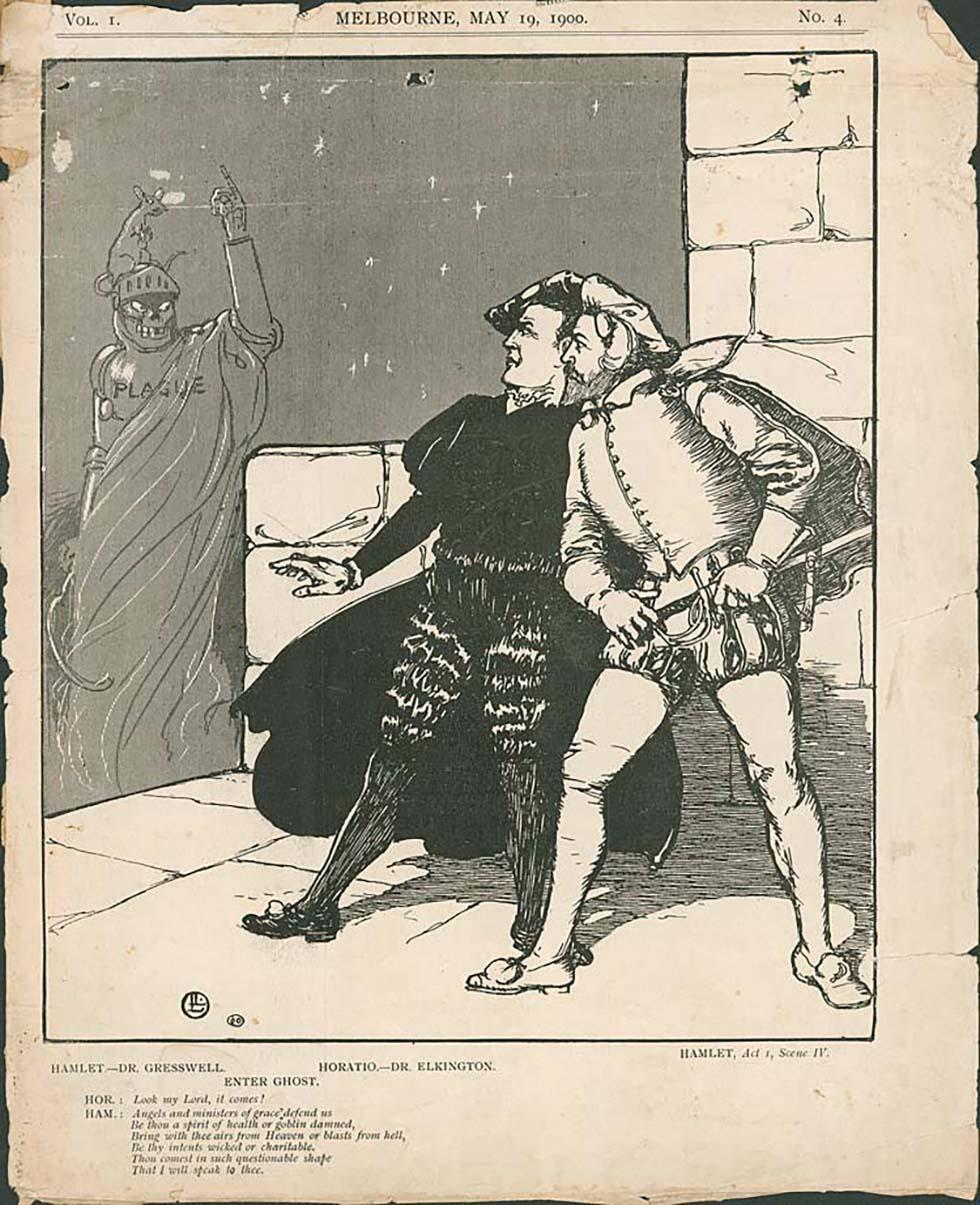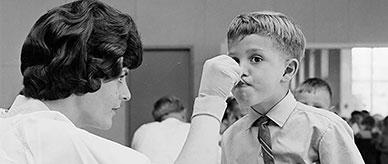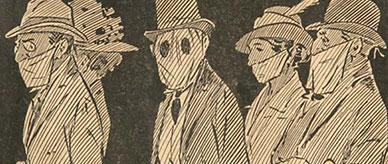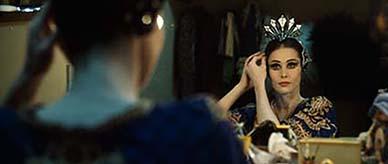


Transcript
[Header reads ‘VOL. I.', 'MELBOURNE, MAY 19, 1900.', 'NO. 4.']
[A black and white cartoon showing two men in Renaissance outfits looking warily at a ghost. The ghost is a skeleton wearing medieval armour under a flowing robe, with the word 'PLAGUE' on its chest and a rat sitting on its helmet.]
HAMLET, Act I, Scene IV.
HAMLET – DR. GRESSWELL
HORATIO – DR. ELKINGTON
ENTER GHOST
HOR [Horatio]: Look my Lord, it comes!
HAM [Hamlet]: Angels and ministers of grace defence us
Be thou a spirit of health or goblin damned,
Bring with thee airs from Heaven or blasts from hell,
Be thy intents wicked or charitable.
Thou comest in such questionable shape
That I will speak to thee.
About this record
This black-and-white cartoon, published on 19 May 1900, depicts the outbreak of the bubonic plague in Melbourne by using imagery and a stanza from Shakespeare's play Hamlet. A seven-line quotation from Act I Scene IV is printed below the image. The drawing shows two contemporary Melbourne figures, Dr John Elkington and Dr Dan Gresswell, who are represented as the characters Horatio and Hamlet respectively. The men are standing in front of the spectre of a ghost on which is printed the word 'plague'.
Educational value
- The cartoon is a response to the public panic caused by the outbreak of bubonic plague in Melbourne. The epidemic killed some 550 people in Australia between 1900 and 1910. At the time, little was known about the disease outside medical circles. In using the ghost from Shakespeare's Hamlet, the cartoonist evokes public fear of an invisible stalking killer, and celebrates the two doctors who, like Hamlet and Horatio, face the unknown with courage.
- The character Hamlet represents Dr Dan Gresswell (1853–1904), medical inspector for the Victorian Board of Public Health. The first case of plague in Melbourne was reported to him on 8 May 1900, less than two weeks before this drawing appeared. It was Gresswell's responsibility to plan for a potential outbreak of plague. An expert in public health, he advocated quarantine stations, the fumigation of houses, clearing of drains and public inoculations.
- The cartoon depicts Dr John Elkington (1871–1955) as Horatio. Dr Elkington worked for Victoria's Department of Public Health and assisted Gresswell during the plague outbreak. Elkington was responsible for carrying out fumigation orders and inspecting ships as they arrived at Melbourne. He played a key role in the containment of disease as shipping, while vital for the state's economy, brought infected people and animals to the city. The outbreak was thought to have begun in the port area.
- Gresswell was highly regarded by the government, the medical community and the general public. His interventions had contained an outbreak of influenza that struck Melbourne in 1890. Gresswell also instituted lasting control measures for tuberculosis. He championed the improvement of Melbourne's sanitary conditions and advocated public health awareness and health education. His efficiency and organisation saw Melbourne's death rate decline between 1890 and 1904.
- The 1900 outbreak of bubonic plague in Australia was part of an international pandemic, which caused millions of deaths worldwide. This new strain of plague originated in China in the 1850s and spread across the world through shipping networks. The plague bacillus infects rats and is transmitted to people through flea bites. Symptoms include swollen lymph nodes, called buboes, which develop in the groin, armpit and neck and turn black as the virus progresses.
- The majority of the 1200 cases reported were in Sydney, where the plague is thought to have originated. Although Melbourne's port made the city vulnerable, fewer than 10 cases were reported, with very few deaths. Melbourne's death toll was only a small fraction of the 165 deaths in Australia that year. Gresswell's training, good organisation and improvement of sanitary conditions helped account for this low death rate.
Acknowledgments
Learning resource text © Education Services Australia Limited and the National Archives of Australia 2010.
Related themes
Need help with your research?
Learn how to interpret primary sources, use our collection and more.



